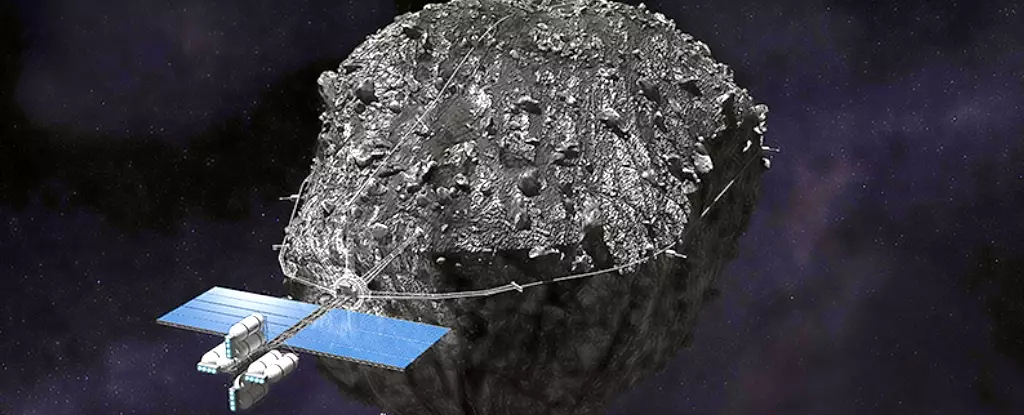Asteroid mining has long captivated the imagination of scientists, futurists, and entrepreneurs alike, sparking discussions laden with astronomical figures. One such target of interest is Psyche, a metallic asteroid thought to harbor trillions of dollars worth of resources. The sheer magnitude of claimed worth might seem fascinating, yet critical examination is essential to disentangle fact from hyperbole.
In assessing the potential value of asteroids, simplistic evaluations often miss the intricate realities. A study funded by Astroforge, a start-up in the asteroid mining arena, has shed light on what metals can realistically be extracted from these celestial bodies. The examination focuses primarily on the materials that could bring true economic value back to Earth, notably the platinum-group metals (PGMs).
PGMs, including metals like rhodium and platinum, play critical roles in modern technologies. They have high market values, often exceeding hundreds of thousands of dollars per kilogram, driven by their scarcity and multifunctional applications. Conversely, metals like iron, aluminum, and magnesium, although abundant in asteroids, may not justify the costs of transportation back to Earth due to their relatively low market prices in comparison to PGMs.
This bifurcation of metals into two categories — those valuable enough for terrestrial return versus those viable for in-space utilization — is crucial. The latter group includes materials that can support future space infrastructure projects but face the challenge of high extraction costs and low demand.
The evaluation of asteroid composition raises vital questions about the actual materials available. Recent investigations indicate that the longstanding belief in ‘pure metal’ asteroids may not reflect reality. Instead, many asteroids contain lower concentrations of PGMs than previously assumed while still offering higher yields compared to terrestrial ores. This suggests that while the initial valuations of a metallic asteroid’s worth may be overstated, the reality is still promising.
Meteorite studies serve as our primary reference point for estimating the composition of asteroids. These studies reveal that PGMs might exist in concentrations significantly greater than those found on Earth, particularly in refractory metal nuggets (RMNs). These RMNs, often embedded in calcium-aluminum inclusions within L-type asteroids, could potentially provide large yields, even if individual nuggets are minute in size.
While the potential for valuable resources exists, the economic feasibility of mining these asteroids hinges on processing capabilities. The metals suggested for use in space — such as building materials for space stations — present substantial processing challenges. Extracting usable metal from their oxidized states involves energy-intensive methods like molten regolith electrolysis, complicated by issues like the lack of a reliable large-scale power source on-site.
This presents a classic ‘chicken-or-egg’ conundrum: mining requires power, but establishing a power supply necessitates the construction materials that mining could provide. The situation underscores a broader complexity in developing an ethical and practical framework for asteroid mining operations.
The road ahead remains ambitious for companies like Astroforge, which are motivated to revolutionize our understanding of asteroid resources. Their forthcoming mission to near-Earth asteroids will seek to gather critical data that could clarify our comprehension of the vast materials available in the cosmos.
However, it is also essential to consider the ethical implications tied to asteroid mining endeavors. Sustainable practices must be prioritized, ideally ensuring that such ventures do not compromise the ecological balance of our own planet or the solar system at large. Questions regarding ownership and regulatory frameworks also need urgent attention, as humanity grapples with the management of extraterrestrial resources.
While the prospect of asteroid mining offers tantalizing rewards, responsible exploration must begin with rigorous analysis of the actual trade-offs involved in extraction, processing, and sustainability. Examining the genuine potential for metallic harvesting requires not just ambitious dreaming, but grounded science that navigates through the complexities of space economics and resource management.

